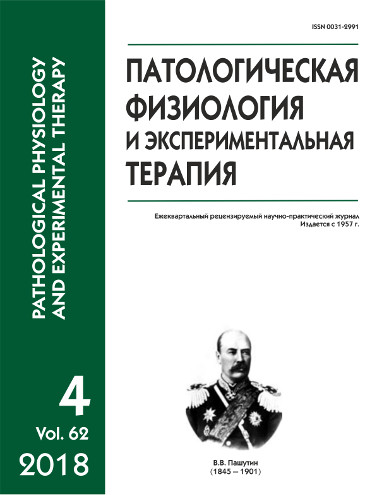The state of rat hemostasis system under the action of a single exposure to immersion hypothermia
Abstract
Aim. To study the state of rat hemostasis system during hypothermia and in post-hypothermic period. Methods. The study was performed on 40 Wistar male rats weighing 300 ± 15 g. Immersion hypothermia was modeled by placing the animals in individual cells in water at a water temperature of 5°C and an air temperature of 7°C. The criterion for terminating the exposure was a decrease in rectal temperature to 10—16°C, which corresponded to ultra-deep hypothermia. Exposure time was individual and averaged 55 ± 5 minutes. The control was the blood of 20 animals withdrawn after they had been placed in water in individual cells at a water temperature of 30°C and an air temperature of 22—25°C. The exposure time was similar to the cooling time of animals of the experimental group. Then all animals were divided into 4 groups. In the first group (control), blood was withdrawn immediately after removing the rats from water. In the second group (experimental) — immediately after reaching ultra-deep hypothermia. In the third group — at 24 hours after removing the rats from water (control). In the fourth group — at 24 hours after the end of cooling (experimental). Results. Comparative analysis of the results showed that immediately after the end of single cold exposure, the platelet aggregation activity was increased with development of hypocoagulation shifts, and the аntithrombin III concentration was decreased, which was associated with increased fibrinogen concentration and inhibition of the fibrinolytic system activity. The described hemostasiological status fits into the picture of a distress response to a single action of the stimulus. One day after the experimental animals have reached the critical core temperature, hypocoagulation shifts persisted in the blood, fibrinogen concentration increased, and thrombinemia markers emerged. Therefore, one day after general hypothermia, the risk for developing the state of thrombotic readiness remained, and the state of distress increased. Conclusions. The signs of impaired hemostasiological properties of the blood observed immediately after the end of cooling were aggravated in 24 hours by emergence of thrombinemia markers in the blood.






